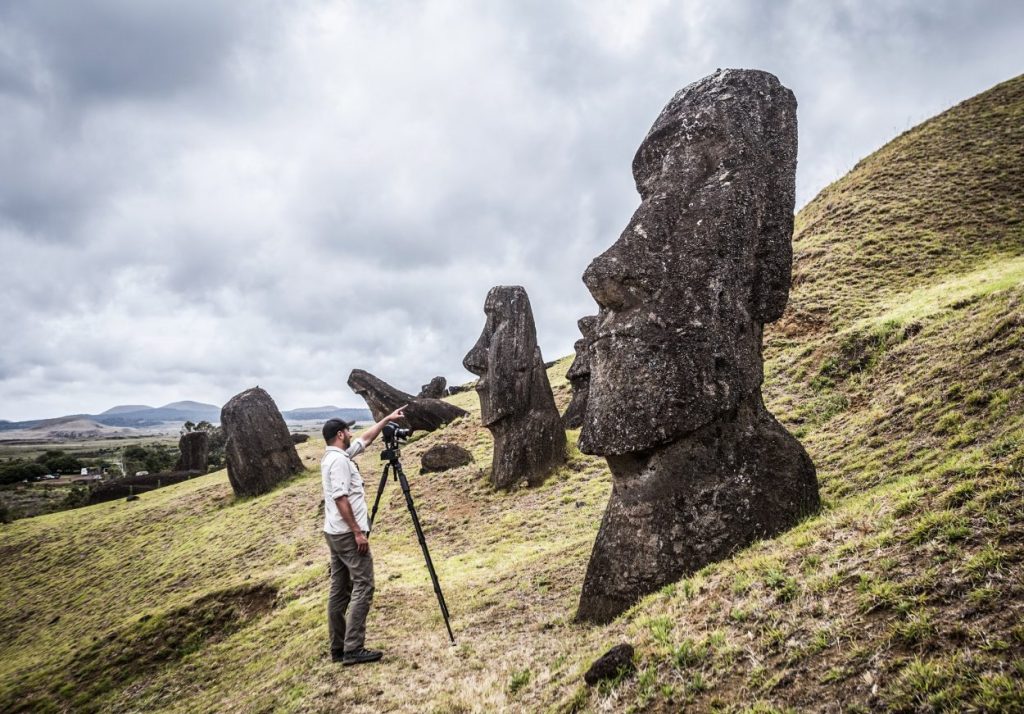[ad_1]
Chance Coughenour, program manager at Google Arts & Culture, joined me on Instagram Live yesterday to talk about his work in digital archaeology. For Project Mosul, Coughenour crowdsourced pictures of destroyed sites in the Middle East and stitched them together into rich digital reconstructions, using photogrammetry to take measurements from the images. For me, this process offers a great metaphor for what archaeologists do: they don’t just dig for fragments, they assemble those fragments—physically and conceptually—into a picture of the past. Coughenour added that digging is itself a destructive process, and archaeologists are always documenting the process of destruction. He’s exploring new tools that depict the passage of time in these representations.
Coughenour is enthusiastic about the potential of machine learning tools for helping archaeologists grapple with large scholarly data sets. He spoke about Fabricius, a new program that uses image recognition and language processing technologies to read and write Egyptian hieroglyphs. (It launched July 15, the anniversary of the day in 1799 when a French officer found the Rosetta Stone during the Napoleonic campaign in Egypt.) You can watch our full conversation here. This was the first in a new weekly series of chats about art and tech. Next week, Michael Darling, chief curator at the Museum of Contemporary Art Chicago, will discuss “.paint,” a show examining how painters have incorporated digital tools into their process, which goes on view tomorrow when the museum reopens to the public.
The Serpentine Galleries in London are quickly making a name for thinking through the art world’s relationship to new technologies. In collaboration with the digital humanities department at King’s College, the Serpentine launched Creative AI Lab, a think tank researching the impact of machine learning on art and curation. The lab’s database shares papers, tools, online courses, and other resources. Last week, the Serpentine published “Future Art Ecosystems 1: Art and Advanced Technologies,” a wide-ranging report surveying trends in art and tech. As the authors note, other papers in this genre have focused on the investment potential of new technologies for the art world. But this one considers new institutional models and studio practices, like the “art stack,” a vertical structure exemplified by Tokyo-based collective teamLab, which combines experimental collaborative processes and exhibition spaces that are funded by ticketed experiences and can operate independently of art world infrastructures. The Serpentine’s analysis of the tech industry’s growing role in patronage poses provocative questions, like “What would a museum fully owned and operated by a technology company look like, and who would be its audience?” and “How can much smaller tech organizations be involved?” It’s exciting to see an institution taking on these issues with such clarity, intelligence, and insight.
Robert Yang, whose computer game Hard Lads was reviewed this week by Michael Thomsen, just concluded a Boffo residency, a program that has been bringing artists to make work on Fire Island since 2014. Over two weeks, Yang and his collaborators put together an interactive simulation of life on the island. At the game’s debut last weekend, people came to play, standing at a distance from each other and the projection of the game on a screen over a pool, texting a number to claim avatars and move them among renderings of modernist houses and beaches, triggering sexy virtual interactions that defy real-world social distancing protocols.
For more criticism, news, and links, subscribe to The Program, our weekly email newsletter on art and technology.
[ad_2]
Source link


